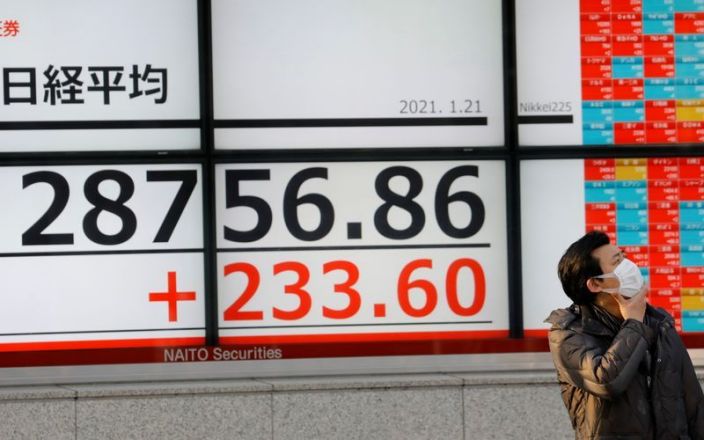
SYDNEY (Reuters) – Asian shares rested at record highs on Thursday as investors digested recent meaty gains, though the promise of endless free money to sustain buying was reaffirmed by benign U.S. inflation data and a very dovish outlook from the Federal Reserve.
Adding to the torpor was a lack of liquidity as markets in China, Japan, South Korea and Taiwan were all on holiday.
MSCI’s broadest index of Asia-Pacific shares outside Japan eased 0.1%, having climbed for four sessions straight to be up over 10% so far this year.
Japan’s Nikkei was shut after ending at a 30-year peak on Wednesday, while Australia’s main index held near an 11-month top.
Futures for the S&P 500 and NASDAQ both dipped 0.1%, having again hit historic highs on Wednesday.
Still, the outlook for more global stimulus got a major boost overnight from a surprisingly soft reading on core U.S. inflation, which eased to 1.4% in January.
Federal Reserve Chair Jerome Powell said he wanted to see inflation at 2% or more before even thinking of tapering the bank’s super-easy policies.
Notably, Powell emphasised that once pandemic effects were stripped out, unemployment was nearer 10% than the reported 6.3% and thus a long way from full employment.
As a result, Powell called for a “society-wide commitment” to reducing unemployment, which analysts saw as strong support for President Joe Biden $1.9 trillion stimulus package.
Indeed, Westpac economist Elliot Clarke estimated over $5 trillion in cumulative stimulus, worth 23% of GDP, would be required to repair the damage done by the pandemic.
“Historical experience provides strong justification to only act against undesired inflationary pressures once they have been seen, after full employment has been achieved, he said.
“To that end, financial conditions are expected to remain highly supportive of the U.S. economy and global financial markets in 2021, and likely through 2022.”
The mix of endless Fed support and a tame inflation report was a salve for bond market pains and 10-year yields eased to 1.12%, from a 1.20% high early in the week.
That in turn weighed on the U.S. dollar, which slipped to 90.451 on a basket of currencies and away from a 10-week top of 91.600 late last week.
The dollar eased to 104.57 yen, from a recent peak 105.76, while the euro rallied to $1.2117 from its low of $1.1950.
In commodity markets, gold was sidelined at $1,839 an ounce as investors drove platinum to a six-year peak on bets of more demand from the automobile sector. [GOL/]
Oil prices took a breather, having enjoyed the longest winning streak in two years amid producer supply cuts and hopes vaccine rollouts will drive a recovery in demand. [O/R]
“The current price levels are healthier than the actual market and entirely reliant on supply cuts, as demand still needs to recover,” cautioned Bjornar Tonhaugen of Rystad Energy.
Brent crude futures eased back 50 cents to $60.97, while U.S. crude dipped 48 cents to $58.20 a barrel.






